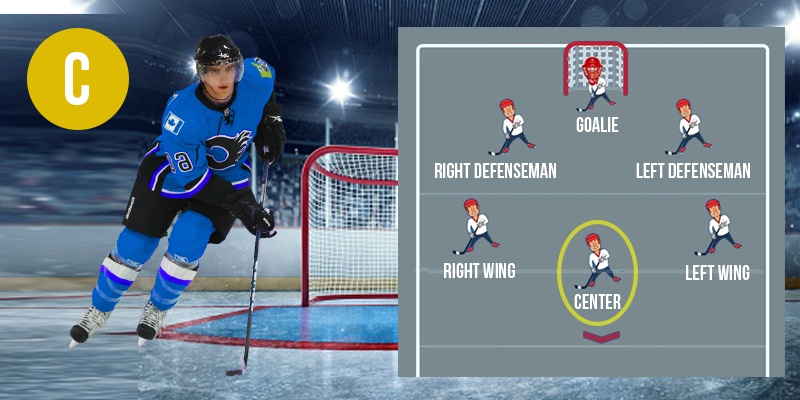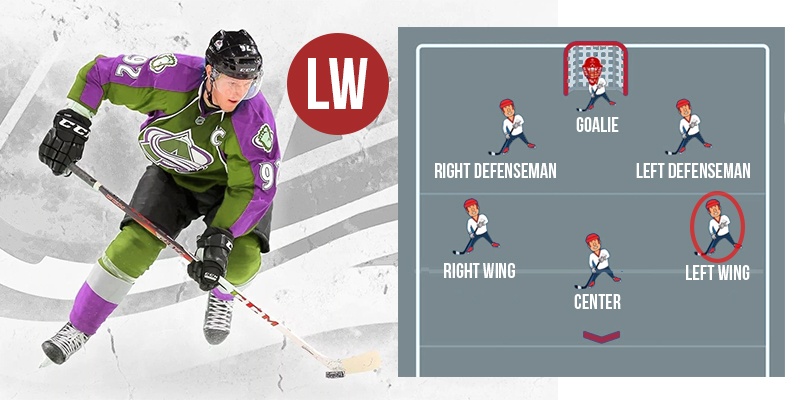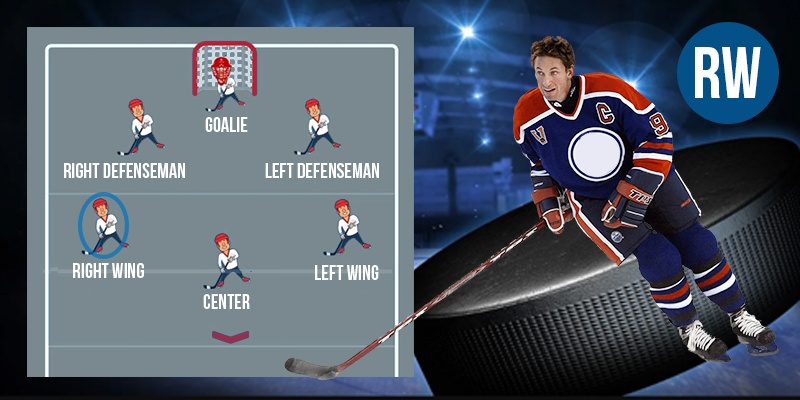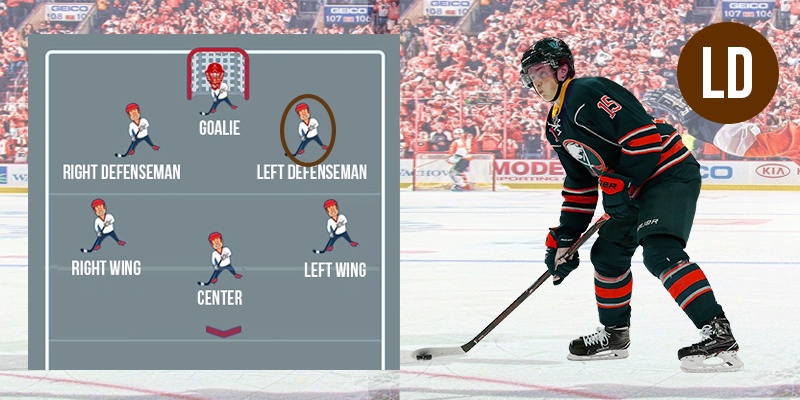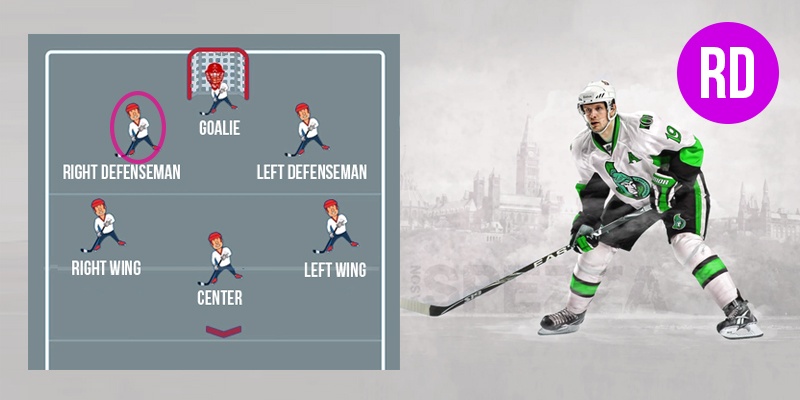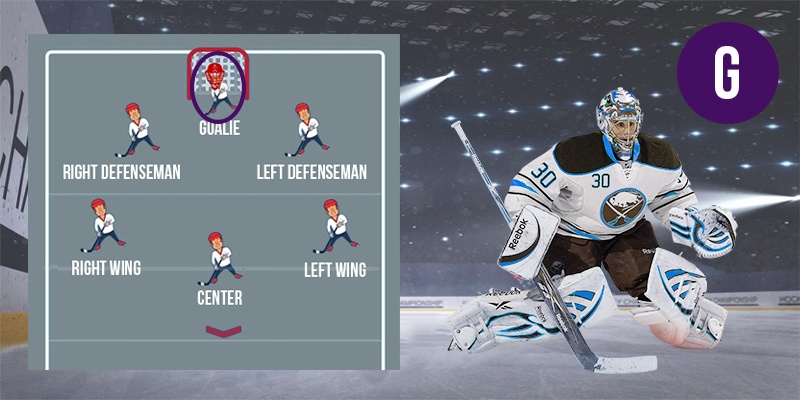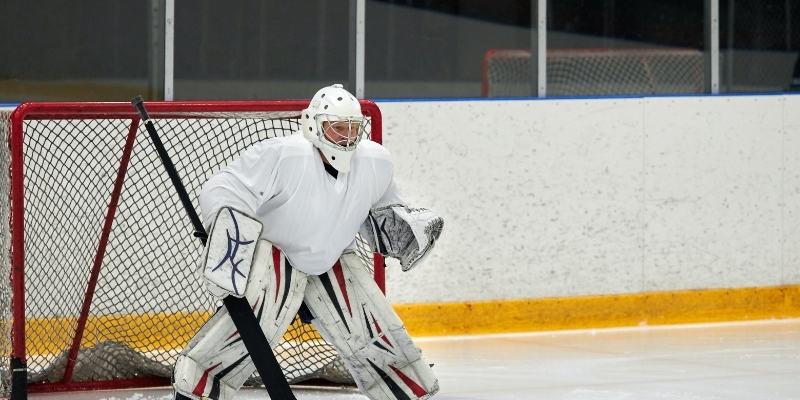Ice hockey is a fast-paced sport that can be extremely exciting to watch. The players move around the rink at high speeds, stickhandle the puck deftly and shoot goals with great accuracy. All of this is made possible by the fact that ice hockey teams are composed of players with specific roles and responsibilities on the ice.
But if you’re new to the game, it can be a little confusing to understand all of the positions and what they do. In this article, we will take an in-depth look at each of the Ice Hockey Positions.
We will also discuss what each position is responsible for on the ice, as well as some of their strengths and weaknesses. By the end of this article, you should have a good understanding of all Ice Hockey Positions and their responsibilities.
Positions in Ice Hockey

There are six total positions in Ice Hockey:
- Center
- Left Winger
- Right Winger
- Left Defenseman
- Right Defenseman
- Goaltender
Each position has its own unique set of responsibilities on the ice. Let’s take a closer look at each one.
1) Centre
The center is often considered the most important position in ice hockey. They are responsible for both offense and defense and must be skilled at both skating and passing.
Centers typically play a physical game and are good at winning face-offs. They are also responsible for helping out the defensemen on their own team. They are often the team captain or alternate captain.
Some of the best centers in the NHL include Sidney Crosby, Jonathan Toews, and Connor McDavid
Strengths:
- Skating
- Passing
- Face-offs
- Physicality
Weaknesses:
- Defensive Zone Coverage
- Turnovers
Centers need to be able to skate well and have good stamina, as they often play the entire game. They must also be able to think quickly and make good decisions with the puck.
2) Left Winger
The left-winger is responsible for playing on the left side of the ice. They are often part of the team’s offensive attack and must be skilled at skating and shooting.
Left-wingers typically have a good understanding of the game and can make good passes to their teammates. They are also responsible for helping out the left defenseman on their team.
Some of the best left-wingers in the NHL include Alexander Ovechkin, Patrick Kane, and Artemi Panarin.
Strengths:
- Skating
- Shooting
- Passing
- Vision
- Leadership
Weaknesses:
- Defensive zone coverage
- Physicality
Left-wingers are an important part of any team’s offense. They must be skilled at skating, shooting, and passing. They also need to have a good understanding of the game and be able to make good decisions. left-wingers need to be able to play well in both the offensive and defensive zones.
3) Right Winger
The right-winger is responsible for playing on the right side of the ice. They are often part of the team’s offensive attack and must be skilled at skating and shooting.
Right-wingers are frequently well-versed in the game, and they can put out good passes to their teammates. They are also responsible for helping out the right defenseman on their team.
Some of the best right-wingers in the NHL include Patrick Kane, Blake Wheeler, and Mark Stone.
Strengths:
- Skating
- Shooting
- Passing
- Understanding of the game
Weaknesses:
- Defensive play
The left-winger is in charge of playing on the team’s left side of the ice. They are frequently a member of the team’s offensive attack and must be able to skate and score. They have a good understanding of the game and can make successful passes to their teammates. They are also able to play effectively.
4) Left Defenseman
The duty of the left defenseman is to cover the left side of the ice and act as the final line of defense against the other team scoring a goal. They need to be able to clear the puck out of the zone and also make good outlet passes.
The left defenseman must be aware of where the other team’s forwards are at all times and must communicate with their own goaltender and teammates. They need to have a good understanding of the game and be able to make quick decisions.
Left defenseman must be able to skate backward quickly and efficiently in order to defend against oncoming forwards. They must have good balance and be able to maintain their position while being checked by an opponent. They also need to be able to shoot the puck accurately and hard in order to clear the zone or get it out of danger.
Strengths:
- Good at skating backward
- Communicates well with teammates
- Understands the game
- Makes quick decisions
Weaknesses:
- Can be overpowered by larger forwards
- Not always able to clear the puck out of danger
The left defenseman is responsible for a lot on the ice. They need to have good stamina in order to skate backward and forward constantly. They must be able to think quickly and make good decisions under pressure. They also need to be able to communicate well with their teammates in order to keep everyone on the same page.
The left defenseman is a key component on the ice and plays a crucial part in the team’s success.
5) Right Defenseman
A right defenseman’s job is to prevent the opponent’s left-winger from scoring. The right-winger is the first skater charged with defending his side of the ice. The defender on the right side is the second Skater, who is responsible for fighting for pucks in the corner and in front of the net. While a defenseman rarely scores, they are responsible for keeping the puck in the correct side of the offensive zone and getting shots on goal.
The most important attribute for a right defenseman is strength. They need to be able to clear the puck from in front of the net and stop opposing players from getting good scoring positions. A good right defenseman is also quick, so they can get back on defense if needed.
It is also important for a right defenseman to be good at communication. They need to be able to talk to their teammates and tell them where they need help. They also need to be able to listen to the coach’s instructions and make adjustments on the fly.
Strengths:
- Quick
- Strong
- Win faceoffs
- Support wingers
- Good at communication
Weaknesses:
- Can get overpowered by larger forwards
- May not always be able to clear the puck
The right defenseman is the second line of defense against the opposing team. They need to be able to communicate with their teammates and follow the coach’s game plan. A right defenseman also needs to be strong and quick, so they can stop the other team from scoring.
6) Goaltender
The goaltender is the last line of defense and their main responsibility is to stop the puck from entering the net. They are also responsible for controlling the rebounds, making sure that the puck doesn’t go out of play, and covering the puck when necessary.
When it comes to where they stand in the net, goaltenders have a lot of leeways, although they generally position themselves in the middle or on one side. They may also play the puck outside of the crease, but they must avoid crossing the red line.
The goaltender is usually the tallest player on the team and they wear special equipment that includes a mask, gloves, leg pads, and a stick.
Strengths:
- Covers a lot of the net
- Stops most shots
- Can handle the puck well
- Defend against the opponent’s attacks
- To prevent rebounds, cover the puck.
- To make a surprise counter, pass the puck.
- Demonstrate mental resilience.
Weaknesses:
- Cannot skate outside of the crease
- May not be able to stop all shots
The goaltender is the last line of defense for the team. They need to be able to cover a lot of the net and stop most of the shots. A goaltender also needs to be able to handle the puck well, so they can make plays when necessary.
If you’re interested in playing goaltender, you need to be able to stay calm under pressure and have quick reflexes. You also need to be able to think quickly and make split-second decisions.
The Center Position in Hockey
The center is a pivotal position in hockey, responsible for both offense and defense. On offense, the center needs to be able to control the puck and make plays. They need to be able to skate quickly and make accurate passes. On defense, the center needs to be able to backcheck and support the defenseman.
A good center is someone who is versatile and can play both ends of the ice. They need to have good hockey sense and be able to think quickly.
What Do Centers Do in Hockey?
The centers are frequently considered the ice’s facilitators. The middle of the rink is always occupied by both offense and defense. They are the players who always seem to have the puck on their sticks.
The center is flanked by two wingers, and it’s generally up to him or her to get the puck up the ice. Once in the offensive zone, they’ll need to make a decision: either set up one of their wingers for a shot or take one themselves.
When the puck is on the other side of the ice, it’s a center’s job to get back and support their defense. They need to be able to skate quickly and make smart decisions when they have the puck.
There are many different types of centers in the NHL. Some are big and strong and use their size to win battles along the boards. Others are smaller and more skilled, using their speed and agility to create plays.
The Wing Position in Hockey
Wingers are the players on the ice who play on either side of the center. Their main responsibility is to score goals, but they also need to be able to backcheck and support the defense.
On offense, wingers need to be able to skate quickly and make accurate passes. They also need to be able to shoot the puck accurately. On defense, they need to be able to support the defenseman and backcheck.
Wingers are typically the fastest players on the team. They need to be able to skate quickly and make plays at full speed. If you’re interested in playing winger, you need to have good hockey sense and be able to think quickly.
What Do Wings Do in Hockey?
Wingers are responsible for a lot of the scoring in hockey. They need to be able to skate quickly and make accurate passes. They also need to be able to shoot the puck accurately.
On defense, wingers need to be able to support the defenseman and backcheck. They need to be able to skate quickly and make plays at full speed.
They need to be able to skate quickly and make plays at full speed. If you’re interested in playing winger, you need to have good hockey sense and be able to think quickly.
The Defenseman Position in Hockey
Defensemen are the players on the ice who play behind the forwards. Their main responsibility is to prevent the other team from scoring, but they also need to be able to support the forwards on offense.
On offense, defensemen need to be able to skate quickly and make accurate passes. They also need to be able to shoot the puck accurately. On defense, they need to be able to block shots and support the goaltender.
The most important people on the team are generally defenders. They need to be able to skate quickly and make plays at full speed. If you’re interested in playing defenseman, you need to have good hockey sense and be able to think quickly.
What Do Defensemen Do in Hockey?
Defensemen are responsible for preventing the other team from scoring. They need to be able to skate quickly and make accurate passes. They also need to be able to block shots and support the goaltender.
On offense, defensemen need to be able to skate quickly and make accurate passes. They also need to be able to shoot the puck accurately.
The most important thing for defensemen is to be able to think quickly and make good decisions. They need to be able to communicate well with their teammates.
The Goalie Position in Hockey
The goalie is the most important position on the ice. They are responsible for stopping the puck from going into the net and keeping the other team from scoring. The goalie is the last line of defense and needs to be able to think quickly and move fast.
The position of goalie is not for everyone, it takes a special person to be able to handle the pressure and the responsibility. If you are thinking about becoming a goalie, make sure you are prepared for the challenge.
The goalie is the most important position in hockey. They are responsible for stopping the puck from going into the net. The goalie is the last line of defense. If you are thinking about becoming a goalie, make sure you are prepared for the challenge.
It takes time and hard work to become a competent goalie. You must be able to think quickly and move swiftly. You also need to be able to handle the pressure and the responsibility. If you are dedicated to becoming a good goalie, you will be rewarded with the satisfaction of knowing that you are the most important player on the team.
What Do Goalies Do in Hockey?
Goalies are responsible for stopping the puck from going into the net. They are the last line of defense and must be quick on their feet to make save after save. They wear special equipment to protect them from the hard shots they face.
Defensemen are the players who skate along the blue line in front of the goalie. Their job is to stop the other team from scoring by keeping them away from the net. They also help their own team score by passing the puck to the forwards.
Frequently Asked Questions (FAQ)
How many players are on an ice hockey team?
An ice hockey team is traditionally composed of six players: three forwards, two defensemen, and one goaltender. However, newer variations of the game such as box lacrosse do away with the goaltender position.
NHL teams are allowed to have up to 23 players on their rosters, with most clubs employing around 20 individuals per match. At most levels, the NHL features 12 forwards, 6 defensemen, and 2 goaltenders.
What is the most important position in hockey?
The goaltender is the most important position in hockey. They are responsible for stopping the puck from going into the net and keeping the other team from scoring. The goalie is the last line of defense and he must be capable of thinking quickly and moving swiftly.
What is the most difficult position to play in hockey?
The position of goaltender is the most difficult to play in hockey. The goaltender is responsible for stopping the puck from going into the net and keeping the other team from scoring. The goalie is the last line of defense and must be quick on his feet to make save after save. He wears special equipment to protect him from the hard shots he faces.
Which hockey position scores the most goals?
Forwards score the most goals in hockey. They are responsible for skating up the ice and shooting the puck into the net. Forwards need to be able to skate quickly and shoot the puck accurately.
The most important thing for forwards is to be able to think quickly and make good decisions. They need to be able to communicate well with their linemates and be able to work together to score goals.
What is the easiest position in hockey?
There is no easy position in hockey. All positions require hard work, dedication, and skill. However, some people may argue that the position of defenseman is the easiest because they do not have to skate as fast as forwards or think as quickly as goaltenders.
Bottom Line
Hockey is a complex sport with many different positions and responsibilities. Each position requires hard work, dedication, and skill. Every player on the team is important and plays a vital role in the success of the team.
I hope this article has helped you understand the different positions in hockey and their responsibilities. If you have any questions, feel free to leave them in the comments section below. Thanks for reading!

